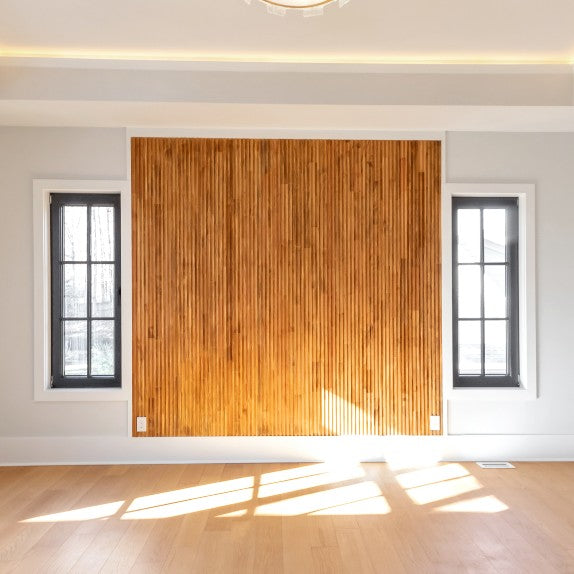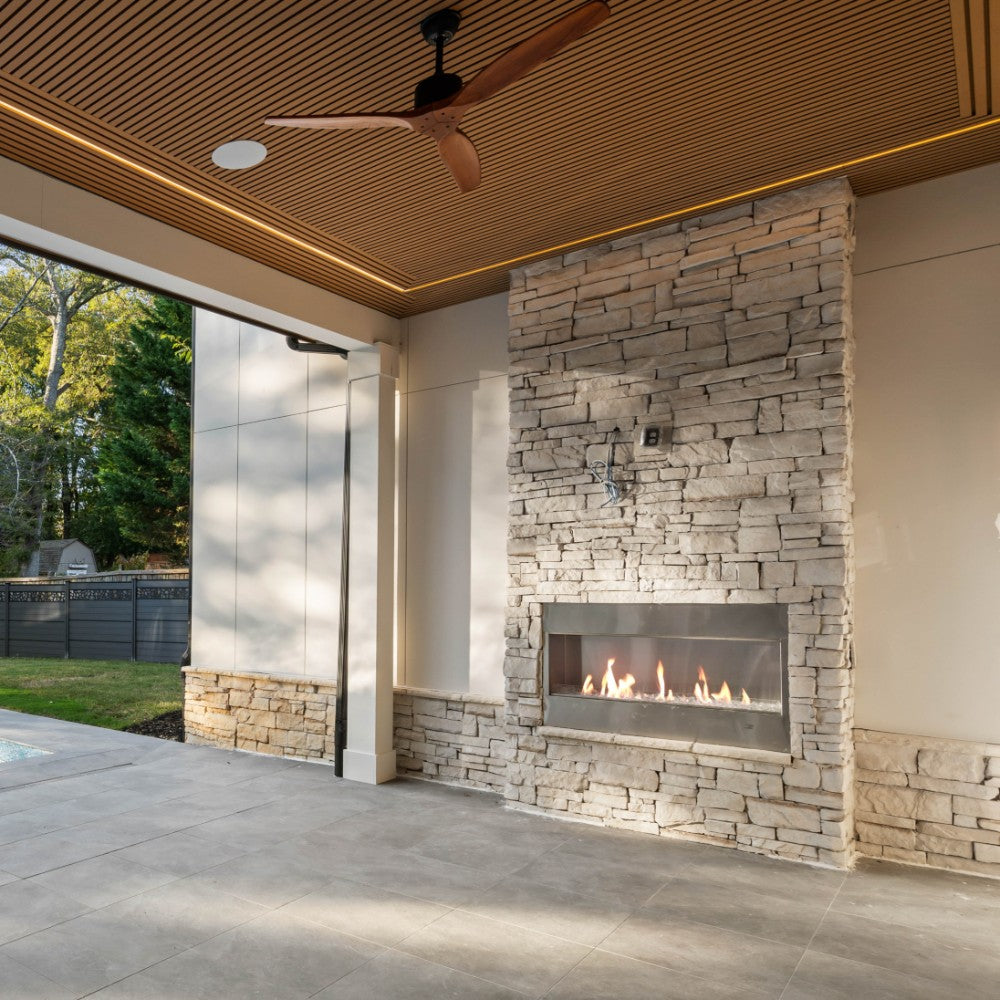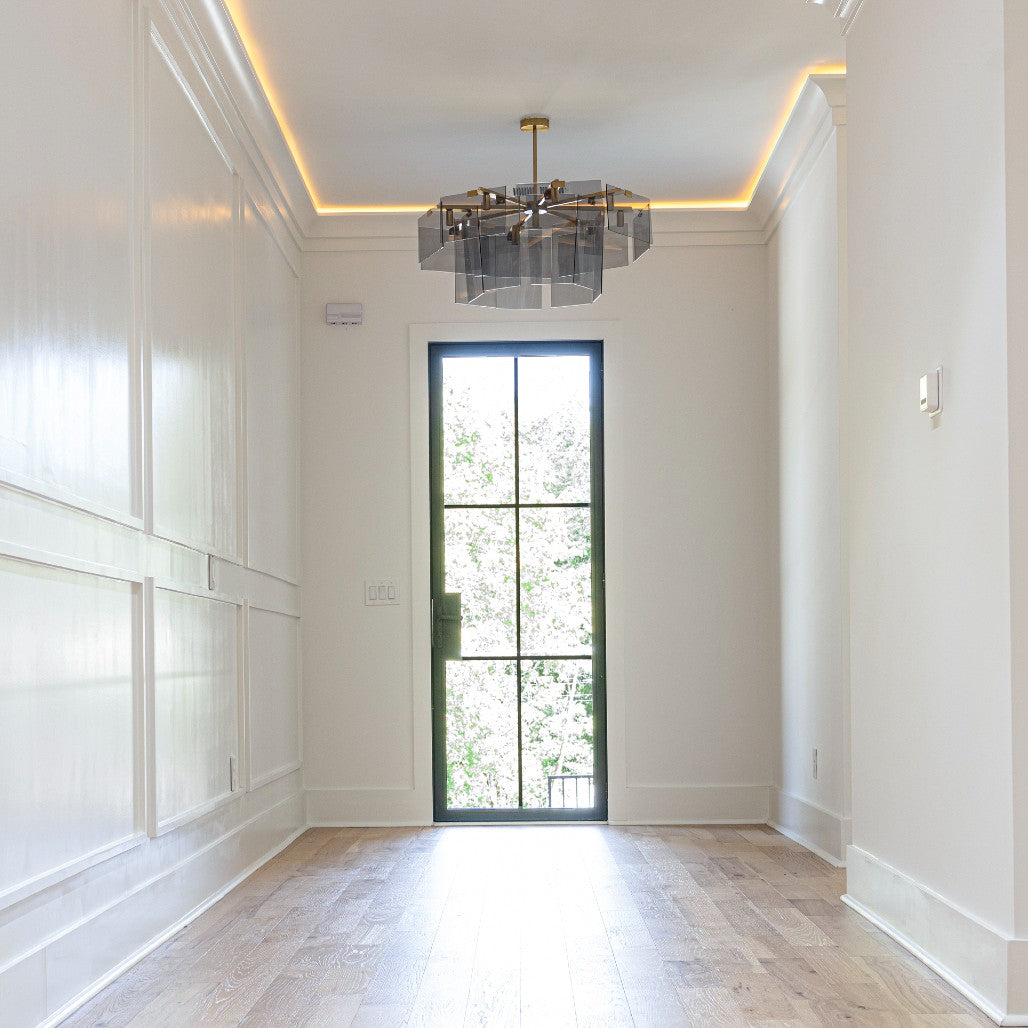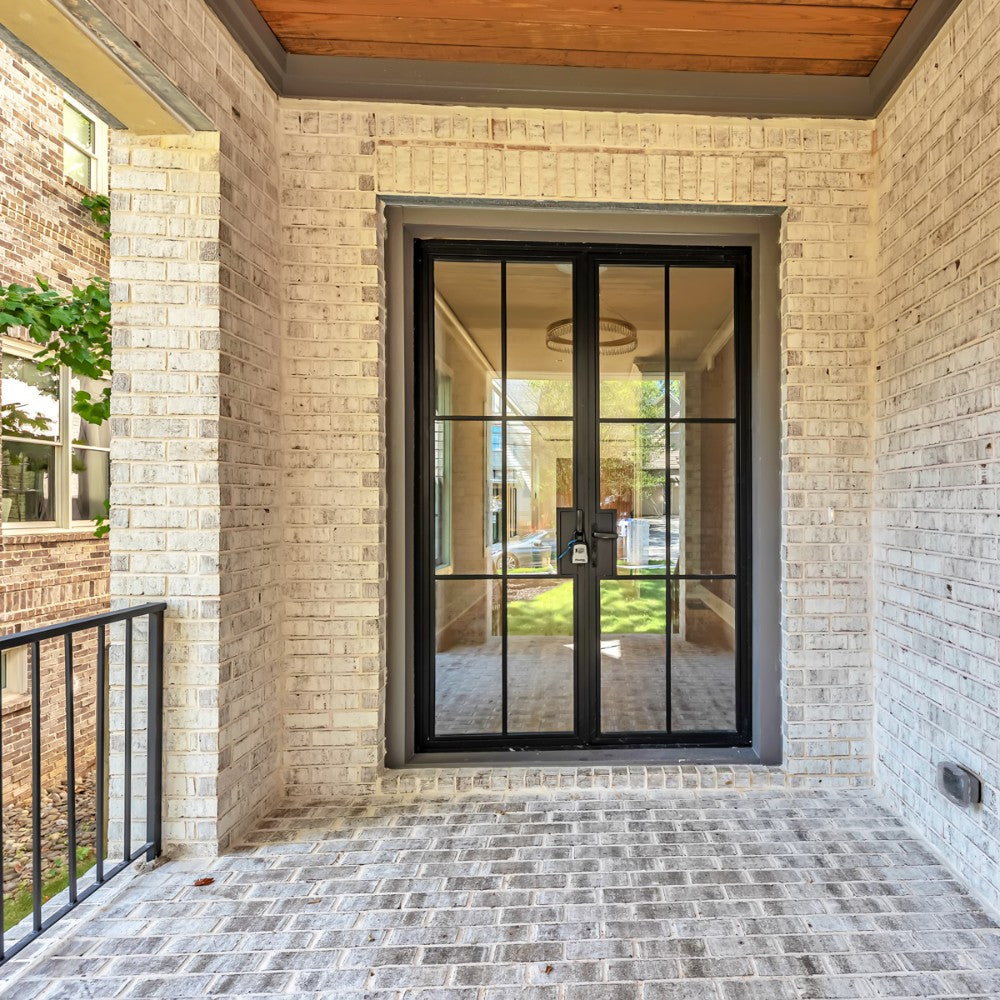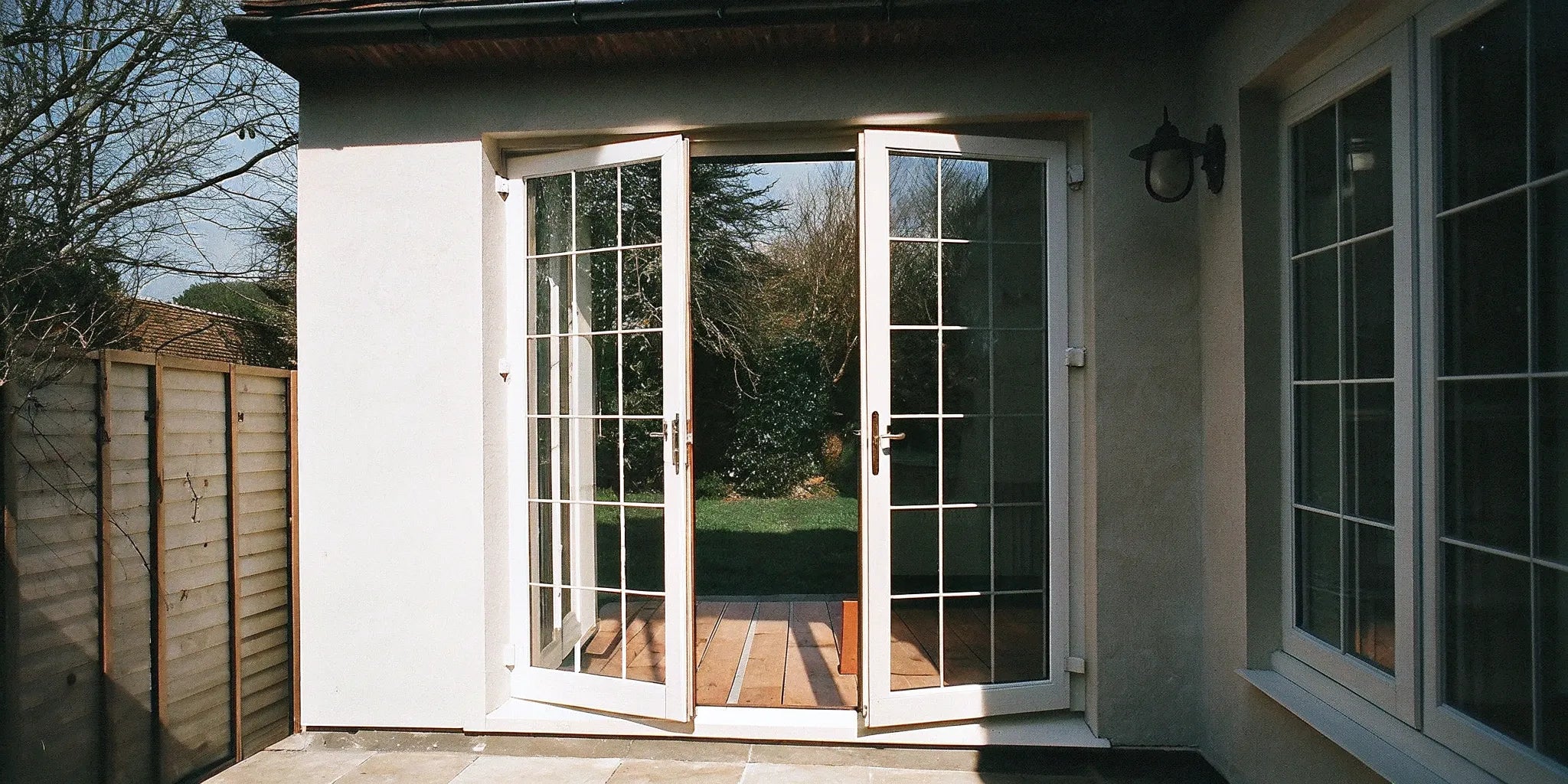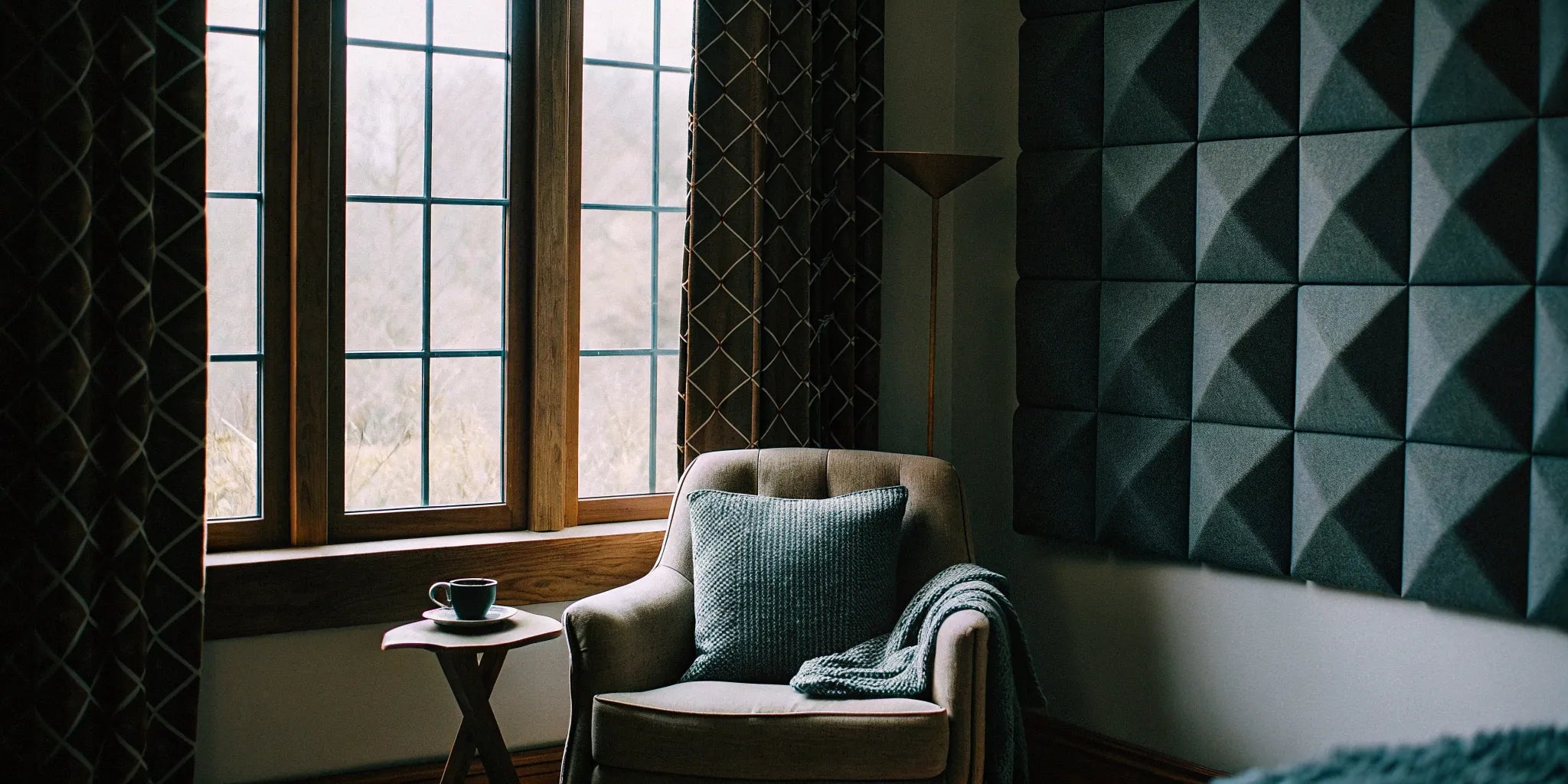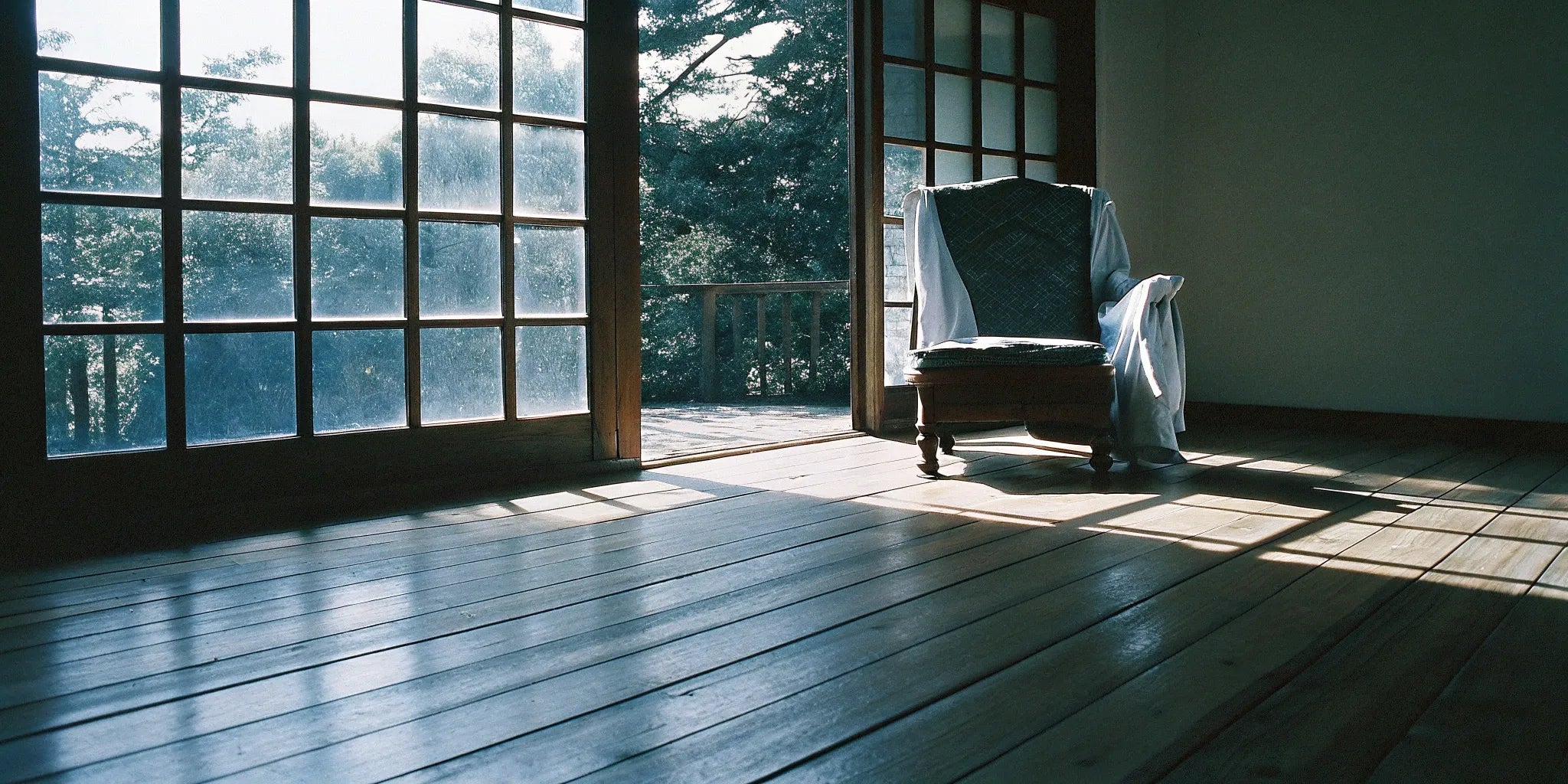
Plank Engineered Flooring: A Complete Buyer's Guide
What comes to mind when you hear "engineered wood"? If you're thinking it's not quite "real" wood, let's clear that up. That's a common myth. High-quality wide plank engineered flooring is a premium product, made with a genuine hardwood surface over a core designed for superior stability. This smart construction means it resists warping from moisture and temperature changes. You can install it in tricky spaces where solid wood often can't go, like basements or over concrete. We'll show you why it's a durable, beautiful, and practical choice for your home.
Key Takeaways
- Stability is its Superpower: The multi-layered core resists warping from moisture and temperature shifts, making it a reliable choice for any level of your home—including basements, kitchens, and over radiant heating.
- Design a Floor That's Uniquely Yours: Go beyond just color by choosing the wood species, plank width, and surface texture. These details work together to create a custom look that fits your home's aesthetic and stands up to daily life.
- Make a Smart and Lasting Investment: Quality engineered flooring adds significant home value and can often be refinished to extend its life. Proper installation and simple maintenance are the keys to a floor that looks great for decades.
What is Wide Plank Engineered Flooring?
If you love the timeless look of hardwood but need something more versatile, wide plank engineered flooring might be your perfect match. Think of it as a high-tech wood sandwich. The top layer is a slice of beautiful, genuine hardwood—like oak, maple, or walnut—which is what you see and walk on. Beneath that surface, multiple layers of plywood or high-density fiberboard are bonded together in a cross-grain pattern. This construction gives the flooring incredible strength and stability.
The "wide plank" part of the name refers to the width of the individual boards. While standard flooring planks are typically 2 to 4 inches wide, wide planks can be 5 inches, 8 inches, or even wider. This creates a more open, expansive look with fewer seams, allowing the natural beauty and grain of the wood to take center stage. It’s a modern take on a classic material, designed to handle the demands of today's homes while delivering stunning visual impact. Our collection of hardwood flooring offers a variety of options to fit any design aesthetic.
How Is Engineered Flooring Constructed?
The magic of engineered flooring lies in its core. High-quality options feature numerous layers of wood stacked and glued together, with each layer's grain running perpendicular to the one above and below it. This cross-hatching creates a powerful internal tension that prevents the board from warping, cupping, or shrinking when exposed to changes in temperature and humidity. While some products have just a few core layers, premium floors can have nine or more, resulting in a far more stable and durable plank. This smart engineering is what makes the floor so resilient and ready for real life.
Core Layers and Stability
The real genius of engineered flooring is hidden in its core. High-quality planks are made with multiple layers of wood stacked and glued together, but here’s the clever part: each layer’s grain runs perpendicular to the one next to it. This cross-grain construction creates a powerful internal tension that gives the flooring incredible stability. It’s this design that makes the planks highly resistant to warping, cupping, or shrinking when exposed to shifts in temperature and humidity. That’s why engineered flooring is such a reliable choice for any level of your home, including basements, kitchens, and over radiant heating. While some products have only a few core layers, premium options can feature nine or more, resulting in a far more durable and long-lasting floor.
Engineered vs. Solid: What's the Difference?
The main difference between engineered and solid hardwood is their composition. Solid hardwood is exactly what it sounds like: one solid piece of wood from top to bottom. Engineered hardwood, with its layered core and real wood veneer, is designed for superior stability. Because solid wood is a single piece, it naturally expands and contracts with moisture changes, making it unsuitable for basements or other high-humidity areas. Engineered flooring, however, is much more resistant to these fluctuations. This allows you to install it on any level of your home, including below grade and over concrete slabs, giving you more design freedom.
Comparing Plank Thickness
When you place them side-by-side, one of the first things you’ll notice is the difference in thickness. Solid hardwood is typically milled to a standard 3/4-inch thickness. Engineered hardwood, on the other hand, is generally thinner, with planks usually ranging from 3/8 to 9/16 inches. This isn't a sign of lower quality; it's a feature of its design. The thinner profile can be a major advantage in renovations, as it makes it easier to match the height of adjoining floors, like tile or carpet, without needing bulky transition strips. It also means you're less likely to run into issues with door clearances after installation, simplifying the entire process.
Sound and Feel Underfoot
How a floor feels and sounds is a subtle but important part of its character. Solid hardwood provides a very firm, solid feel underfoot and does a great job of absorbing sound. The experience with engineered flooring can vary depending on how it’s installed. When it's glued or nailed down, it feels and sounds very similar to solid wood. However, if it's "floated"—installed over a pad without being attached to the subfloor—it might feel slightly softer and produce a more hollow sound when you walk on it. Neither is better than the other; it simply comes down to personal preference and the specific requirements of your installation.
Appearance: Edges and Finishes
From a distance, high-quality engineered and solid floors can look nearly identical, but the details are in the edges and finish. Most engineered hardwood flooring comes prefinished from the factory, which means the stain and protective topcoat are already applied. These factory finishes are incredibly durable and consistent. Engineered planks often feature beveled edges, which are tiny V-grooves between the boards. These edges help hide small imperfections in the subfloor and accommodate slight variations between planks, creating a clean, defined look. In contrast, solid hardwood is often installed raw and then sanded and finished on-site, resulting in a perfectly flat surface with no grooves between the boards.
Why Its Layered Design Is a Game-Changer
Choosing wide plank flooring is a design decision that makes a big statement. The broader boards, which can be 8 inches or wider, create a sense of luxury and openness in any room. With fewer seams breaking up the visual flow, the space feels larger and less busy. This minimalist look allows the wood's natural character—its knots, grain patterns, and color variations—to become a true focal point. It’s a style that feels both rustic and contemporary, perfectly complementing everything from a modern farmhouse to a sleek, urban loft. The result is a floor that feels authentic, grounded, and visually striking.
Common Myths About Engineered Flooring, Busted
There are a few persistent myths about wide plank flooring that can scare people off, but they’re usually based on outdated information. One common fear is that any plank wider than five inches will inevitably "cup," or curl up at the edges. While this was a concern with older solid wood floors, it’s not an issue with high-quality engineered planks. The multi-layered core is specifically designed to counteract this movement. A well-made engineered floor will remain flat and stable for years. The key isn't the width of the plank; it's the quality of its construction.
Engineered Hardwood vs. Laminate and LVT
When you’re exploring flooring options, you’ll quickly run into laminate and luxury vinyl tile (LVT). Both are popular for good reason, but they are fundamentally different from engineered hardwood. The biggest distinction is the surface: engineered flooring has a top layer of genuine hardwood, giving you the authentic look and feel of real wood. Laminate, on the other hand, is essentially a high-resolution photo of wood grain printed on a fiberboard core. LVT is made from synthetic PVC, designed to mimic wood visually. While both have improved dramatically in appearance, they can’t quite replicate the unique character and warmth of a true wood surface.
Durability is another key area of comparison. Laminate is known for its tough, scratch-resistant wear layer, making it a solid choice for homes with pets and kids. LVT is often waterproof, which makes it ideal for bathrooms or basements. However, neither is indestructible. Laminate’s core can be permanently damaged by water, and LVT can be dented or torn by heavy furniture. Engineered hardwood offers a different kind of resilience. Its layered core provides incredible stability against moisture, and while the real wood surface can scratch, it can often be refinished—a repair option that laminate and LVT simply don’t have. This makes our hardwood flooring a lasting investment.
Of course, budget plays a big role in any decision. Laminate flooring is typically the most cost-effective option, with LVT falling somewhere in the middle. Engineered hardwood is a premium product and its price reflects that. However, it’s important to think about long-term value. Because it’s considered "real wood," engineered flooring adds more resale value to your home than its synthetic counterparts. You’re not just buying a floor covering; you’re investing in a feature that enhances your home’s character and worth for years to come.
Why Choose Wide Plank Engineered Flooring?
So, you're drawn to the beautiful, expansive look of wide plank flooring, but you want to make sure it's the right fit for your project. I get it. Choosing a floor is a big decision. The good news is that wide plank engineered flooring offers a fantastic combination of style, durability, and practicality. Let's walk through some of the biggest reasons why it’s such a popular choice for homeowners and builders alike.
Enjoy Lasting Stability in Any Room
Here’s the secret to engineered flooring’s strength: its construction. Unlike solid wood, which is one single piece, engineered planks are made of multiple layers. The top is a beautiful slice of real hardwood, while the core consists of crisscrossing layers of plywood or other wood materials. This layered design makes the floor incredibly stable, so it’s far less likely to expand, contract, or warp with changes in temperature and humidity. That means you can confidently install gorgeous hardwood flooring in areas where solid wood might struggle, like basements or kitchens.
Advanced Durability for Modern Homes
Let's face it, modern homes are busy places. From kitchen spills to fluctuating humidity, your floors need to handle real life without showing signs of stress. This is where the advanced construction of engineered flooring really shines. Its multi-layered core is specifically designed to resist moisture, making it far less likely to warp or cup compared to solid hardwood. This structural stability means you can bring the warmth of wood to almost any room, including basements and kitchens, where humidity levels can be a concern. Because it handles environmental changes so well, you get the timeless look of real wood with the kind of durability that provides peace of mind for years to come. Our collection of engineered hardwood flooring is built to withstand the demands of daily life.
Find the Perfect Style for Your Home
If you want to make a statement, wide plank flooring delivers. The broader planks mean fewer seams, which creates a clean, uncluttered foundation for your room. This style is perfect for making a space feel more open and airy. The wider surface also does a better job of showcasing the wood’s natural beauty—you really get to see the intricate grain patterns and unique character of the timber. It’s a look that feels both timeless and modern, providing a stunning backdrop for any design style, from rustic farmhouse to sleek contemporary.
Get a High-End Look Without the High-End Price
Let's talk about cost. While wide plank engineered flooring can have a higher initial price tag than some other options, it’s an investment that pays off. Its durability means you’re getting a floor that is built to last for decades, saving you the cost and hassle of replacements down the road. For contractors and designers, this means happier clients and fewer callbacks. If you’re a trade professional, be sure to check out our trade program for bulk discounts that make this premium option even more accessible for your projects.
Cost Comparison: Engineered vs. Solid Hardwood
When it comes to your budget, engineered hardwood often has the edge, at least initially. Most engineered options cost between $4 and $7 per square foot, while solid hardwood typically averages around $8 per square foot. But the upfront price doesn't capture the full value. A quality engineered floor is an investment that pays off in the long run. Its superior durability means you're getting a floor built to last for decades, saving you the cost and hassle of future replacements. High-quality engineered hardwood flooring adds significant home value and can often be refinished to extend its life, making it a financially savvy choice for any project.
Is It an Eco-Friendly Choice?
Choosing engineered flooring is also a smart move for the planet. Because only the top layer is made from premium hardwood (like oak or walnut), this construction method uses less of these slow-growing trees compared to solid wood planks. The core layers are typically made from faster-growing, more sustainable wood species. This efficient use of natural resources makes it a more eco-friendly flooring choice without sacrificing the authentic look and feel of real wood. You get the beauty you want with a smaller environmental footprint.
Understanding VOCs and Sustainable Sourcing
When you're choosing materials for your home, it's smart to think about indoor air quality. That's where VOCs, or volatile organic compounds, come in. These are chemicals that can be released into the air from building materials, including some types of flooring. The good news is that high-quality engineered wood is often made with low-VOC adhesives, which means a healthier environment for you and your family. Look for products that meet strict standards for emissions, like an E1 rating, to ensure you're making a safe choice. Beyond air quality, consider where the wood comes from. Choosing flooring from sustainably managed forests ensures that your beautiful new floor is also a responsible choice for the planet. It’s about creating a space that’s not only stylish and durable but also healthy and conscientious.
Can You Install It Over Radiant Heat?
Love the idea of warm floors on a chilly morning? Engineered flooring is the perfect partner for radiant heating systems. Solid wood can warp or gap when exposed to the consistent temperature changes of underfloor heating. However, the stable, layered construction of engineered planks is specifically designed to handle these fluctuations. This structural stability means you can enjoy the comfort of radiant heat without worrying about damaging your beautiful wood floors. It’s a modern luxury that engineered flooring makes completely accessible.
Water Resistance vs. Waterproofing
Let's clear up a common point of confusion: water resistance versus waterproofing. These terms are not interchangeable, and knowing the difference is key when choosing your floor. Engineered hardwood is designed to be water-resistant. Its multi-layered core gives it an edge over solid hardwood, making it far more stable in humid environments and less likely to warp from moisture. This is why it’s such a great option for kitchens and finished basements. However, water-resistant doesn't mean waterproof. It can handle spills if you clean them up right away, but it’s not built to withstand standing water. For truly wet areas, you'd need a different material, but for most rooms in the house, the moisture resistance of engineered wood is a huge advantage.
How to Choose the Right Engineered Floor
Picking the right floor can feel like a huge decision, but it doesn't have to be overwhelming. When you break it down into a few key steps, you can confidently find the perfect wide plank engineered flooring that fits your style, home, and budget. Think of it as a checklist to guide you from inspiration to installation. We’ll walk through everything from the type of wood to the final finish, so you can make a choice you’ll love for years to come.
Choosing Your Wood Species
The first step is choosing the type of wood. Each species has a unique personality defined by its hardness, grain pattern, and natural color. You can choose from different types of hardwood based on its durability and overall look. Oak is a classic choice known for its strength and prominent grain, making it great for high-traffic areas. Maple offers a lighter, more subtle grain for a clean, modern aesthetic. Exploring different species is the best way to find one that complements your home’s design. Our collection of hardwood flooring offers a variety of options to get you started.
Popular Wood Species Options
To help you narrow it down, here are a few of the most popular choices. Oak is a timeless favorite, known for its classic beauty and impressive durability, making it a workhorse for busy homes. If you prefer a cleaner, more modern aesthetic, Maple offers a lighter color and a subtle grain. For a floor with a lot of personality, Hickory is an extremely hard and durable wood with dramatic grain patterns that add rustic character. And for a touch of sophistication, Walnut provides rich, dark tones and striking grain patterns that create an elegant foundation for any room.
Understanding Wood Grades
Once you’ve picked a species, the next thing to consider is the wood grade. Think of it as a rating system for the wood's appearance. The wood grade is determined by the number of natural characteristics you’ll see, like knots, mineral streaks, and color variations. A higher grade, often called "clear" or "select," will have a very uniform look with minimal imperfections. A lower or "character" grade will showcase the wood's natural story with more knots and color play. There are various grading systems, but the main takeaway is that neither grade is better than the other—it all comes down to the style you want to achieve.
Does Plank Width Really Matter?
The "wide" in wide plank flooring is what gives it such a dramatic and luxurious feel. Unlike standard 2- to 3-inch strips, wide planks can be 8 to 20 inches wide or even more. This creates a striking look with fewer seams, which can make a room feel more spacious and open. The wider boards also do a beautiful job of showing off the wood's natural patterns and character. When choosing your plank width, consider the scale of your room. Larger rooms can handle exceptionally wide planks, while a more moderate width might feel more balanced in a smaller space.
Selecting the Right Texture and Finish
The surface texture and finish are what bring your floor to life, affecting both its appearance and its durability. A smooth finish offers a sleek, traditional look, while textured options like hand-scraped or wire-brushed can add rustic character. A wire-brushed surface is a fantastic choice for busy households because it helps hide everyday scuffs and marks. The finish, whether matte, satin, or semi-gloss, protects the wood and determines its sheen. A matte finish conceals imperfections and creates a modern, natural vibe, while a satin finish offers a subtle glow that’s easy to maintain.
How Your Climate Impacts Your Flooring Choice
Engineered hardwood is known for its stability, but it’s still a natural product that responds to its environment. It performs best when your home’s relative humidity is between 30% and 55%. If the air is consistently too dry, the wood’s top layer can be affected. Before installing, it’s a good idea to understand your home's typical humidity levels, especially if you live in a very dry or humid region. Using a humidifier or dehumidifier can help you maintain a stable indoor climate, ensuring your floors stay beautiful for the long haul.
Budgeting for Your New Floors
Wide plank engineered flooring gives you a premium look that can fit a range of budgets. With prices often ranging from $7.50 to $10.00 per square foot, it proves you don't need to break the bank for quality. When planning your budget, remember to account for more than just the planks themselves. Factor in the cost of underlayment, adhesive, and professional installation if you’re not doing it yourself. For contractors and trade professionals, signing up for our trade program can provide access to bulk discounts that make a big difference on larger projects.
Customizing Your Plank Engineered Flooring
One of the best parts of choosing wide plank engineered flooring is that you’re not stuck with a one-size-fits-all solution. You have the creative freedom to design a floor that perfectly reflects your style and complements your home’s architecture. From the color and texture to the way the planks are laid, every detail can be tailored to create a truly personal look. Let’s walk through the key ways you can customize your new floors.
Finding Your Perfect Color and Sheen
The color and finish are the first things people notice about your floor, and you have an incredible range of options. You can choose a stain that brings out the wood’s natural warmth or opt for a custom color to match your design vision. Whether you prefer a light, airy feel or a dark, dramatic statement, there’s a color for you. The finish—like matte, satin, or semi-gloss—also plays a huge role. A matte finish offers a modern, natural look that hides minor scratches, while a glossier finish reflects more light and feels more traditional. Explore different hardwood flooring styles to see how color and finish work together.
Micro-Bevel or Square: Picking an Edge Style
The edge style of your planks might seem like a small detail, but it has a big impact on the final look. A square edge creates a smooth, seamless surface where the planks fit flush against each other, perfect for a sleek, modern aesthetic. A beveled or micro-beveled edge, on the other hand, creates a subtle or more defined groove between each plank. This adds texture and dimension, highlighting the individual planks and giving the floor a more traditional or rustic character. Your choice here helps define the overall feel of the room, from uniform and polished to distinct and full of character.
Get Creative with Layouts and Patterns
How your planks are installed can completely change the dynamic of a room. While a classic straight layout is always a beautiful choice, especially with wide planks that show off the wood’s natural grain, don’t be afraid to consider other patterns. A diagonal layout can make a small room feel more spacious, while a herringbone or chevron pattern adds a touch of timeless elegance and visual interest. Because wide planks have such a striking presence, any pattern you choose will make a significant statement and draw attention to the beauty of the wood itself.
Explore Our Exclusive Flooring Collections
Feeling inspired? The best way to figure out what you love is to see it for yourself. Browsing through different collections can help you visualize how certain wood species, plank widths, and finishes will look in a real space. Our hardwood flooring collections are curated to showcase a variety of styles, from contemporary to classic. Taking the time to explore these options will give you a clearer picture of what’s possible and help you confidently select a floor that you’ll be happy with for years to come. It’s the perfect starting point for bringing your vision to life.
Comparing Quality, Value, and Service
It’s true that wide plank engineered flooring can be a larger initial investment than traditional narrow-strip flooring. However, it’s important to think about the long-term value. The modern appeal and stunning aesthetic of wide planks can significantly enhance your home’s interior and overall worth. This isn’t just a floor; it’s a foundational design element that sets the tone for your entire space. When you factor in its durability, stability, and timeless beauty, the cost is often justified by the incredible impact it makes. It’s a smart choice for a lasting, high-quality result.
Your Guide to Installation and Maintenance
Once you’ve chosen the perfect wide plank engineered flooring, the next step is ensuring it’s installed correctly and cared for properly. A great installation sets the foundation for a floor that will look beautiful for years, and a simple maintenance routine will keep it that way. Think of it as protecting your investment. With a little know-how, you can make sure your new floors stay as stunning as the day they were laid. Let’s walk through the key steps for installation and long-term care.
How to Install Your Engineered Flooring
When it comes to installing wide plank engineered flooring, how you secure the planks to the subfloor makes all the difference. While there are a few ways to do it, the full glue-down method is widely considered the gold standard. This technique involves applying adhesive across the entire subfloor, creating a solid, stable bond that minimizes any chance of shifting or squeaking down the road. For professionals and serious DIYers, this is the most reliable way to get a secure, long-lasting result. Other options, like nailing down the planks or using a partial glue assist, can also work, but the full glue-down approach provides unmatched stability, especially for wider planks.
DIY-Friendly Installation Methods
If you’re ready to roll up your sleeves and tackle this project yourself, you’ll be happy to know that engineered flooring is incredibly DIY-friendly. While the glue-down method offers maximum stability, many high-quality engineered planks feature a simple click-and-lock system. This design allows you to connect the boards together and “float” them directly over an underlayment without needing nails or messy adhesive. This type of floating installation is often faster and requires fewer specialized tools, making it a fantastic option for a weekend project. Because of its versatility, you can install it over various subfloors, including concrete, giving you more freedom to upgrade any room in your home.
Why Subfloor Preparation Is So Important
Before a single plank is laid, your subfloor needs to be in top shape. This is a step you absolutely can’t skip. A properly prepared subfloor is clean, flat, and dry—this ensures your beautiful new hardwood flooring lies perfectly even and avoids issues later on. Take the time to sweep and vacuum all debris, check for any high or low spots that need to be leveled, and make sure the moisture content is within the recommended range. A little extra effort here prevents major headaches like gaps or buckling. Proper preparation is the secret to a professional-quality finish that stands the test of time.
Keeping Your Home's Climate Just Right
Wood is a natural material, which means it responds to its environment. Your wide plank engineered flooring will subtly expand in humid conditions and contract when the air is dry. To keep it looking its best, maintaining a stable indoor climate is key. Try to keep your home’s humidity level between 30% and 50% year-round. This consistency prevents the wood from moving too much, which can lead to gaps between planks or warping. Using a humidifier in the winter and a dehumidifier in the summer can make a huge difference. It’s a simple step that protects your flooring from the effects of seasonal changes.
Simple Tips for Everyday Cleaning
The great news is that caring for your wide plank engineered flooring is incredibly simple. For daily upkeep, all you really need is a good sweep with a soft-bristle broom or a quick pass with a vacuum (using a hard floor attachment) to pick up dirt and dust. When it’s time for a deeper clean, avoid soaking the floor with water. Instead, use a damp mop with a cleaning solution specifically made for hardwood floors. Harsh, chemical-based cleaners can strip the finish and dull the wood’s natural beauty, so always stick to products designed to care for your floor’s specific finish.
How to Protect Your Floors for Years to Come
To keep your floors looking fresh for the long haul, a few long-term habits go a long way. Placing area rugs or runners in high-traffic zones, like entryways and hallways, is a smart move to prevent scratches and wear. It’s also a good idea to put felt pads on the bottom of your furniture legs to avoid scuffs when things get moved around. Depending on how much foot traffic your floors see, you might consider applying a fresh coat of protective finish every few years to restore their sheen. By promptly cleaning up spills and keeping an eye out for any potential damage, you’ll ensure your floors remain a beautiful centerpiece in your home.
Is Engineered Flooring a Good Investment?
Choosing new flooring is a big decision, and you want to know your investment will pay off in the long run. Wide plank engineered flooring is more than just a beautiful surface; it’s a practical choice that offers lasting value for your home or commercial project. When you look at the cost, durability, and potential return, you’ll find it’s one of the smartest upgrades you can make. It combines the timeless appeal of hardwood with modern engineering, giving you a floor that stands up to daily life while adding significant value to your property. Let’s break down exactly what makes it such a worthwhile investment, from the initial price tag to its long-term benefits.
Understanding the Cost and Long-Term Value
When you start shopping for hardwood flooring, you'll find that engineered planks come in a wide price range. You can find budget-friendly options for under $2 per square foot, with mid-range choices typically falling between $2 and $5. Premium styles can go for $5 or more per square foot. This flexibility means you can find a high-quality floor that fits your project's budget. While the upfront cost is a key factor, remember to consider the long-term value. Engineered flooring’s durability and low maintenance needs mean you’ll save on repairs and replacements down the road, making it a cost-effective choice over its entire lifespan.
How Long Does Engineered Flooring Last?
This is a big question, and the answer is one of the best things about this material. With proper care, a quality engineered floor can easily last for 20 to 30 years, and sometimes even longer. This impressive lifespan comes down to its stable, multi-layered core, which is designed to resist the warping and gapping that can happen with solid wood due to changes in humidity. Its resistance to moisture fluctuations means it holds up beautifully in real-world conditions, making it a durable and reliable foundation for your home for decades.
The key to its longevity is the top layer of real hardwood, known as the wear layer. The thickness of this layer determines how many times the floor can be sanded and refinished. A thicker wear layer allows you to refinish the floor a couple of times, effectively erasing signs of wear and tear and giving it a fresh life. This ability to be renewed is what makes engineered flooring such a fantastic long-term investment. When you choose from our collection of hardwood flooring, you're selecting a product that not only adds immediate beauty and value to your home but is also built to last.
What Does Your Flooring Warranty Actually Cover?
A strong warranty is a clear sign that a manufacturer stands behind its product. When you’re comparing flooring options, pay close attention to the warranty details. Many high-quality engineered floors come with a lifetime residential warranty and a 5-year light commercial warranty, which protects your investment against manufacturing defects and premature wear. This kind of coverage gives you valuable peace of mind. Before you buy, always read the fine print to understand what’s covered, how to maintain your floor to keep the warranty valid, and the process for making a claim if you ever need to.
Can You Refinish Engineered Hardwood Floors?
One of the biggest myths about engineered flooring is that it can’t be refinished. While that’s true for some lower-quality products with very thin veneers, many premium options are designed to be sanded and refinished just like solid hardwood. Some of the best floors on the market can be refinished up to three times, allowing you to erase years of wear and tear or simply update the color to match a new design scheme. The key is the thickness of the top wood layer, or "wear layer." A thicker veneer gives you the flexibility to refresh your floors for decades to come, extending their life and maximizing your investment.
How New Floors Increase Your Home's Resale Value
Hardwood floors are consistently one of the most sought-after features for homebuyers, and wide plank styles take that appeal to the next level. The broader planks create a sense of spaciousness, making rooms feel larger and more open. They also provide a bigger canvas to showcase the wood’s natural grain and character, adding a touch of organic luxury to any space. Installing wide plank engineered flooring is a reliable way to increase your property’s resale value. It’s an upgrade that not only enhances your daily life but also delivers a strong return when it’s time to sell.
Boosting Home Value Over Laminate and LVT
While laminate and LVT are popular for their affordability, they don’t carry the same weight as real wood when it comes to property value. These materials are essentially high-resolution images of wood printed on a synthetic core. Homebuyers can spot the difference instantly. Engineered flooring, on the other hand, offers an authentic hardwood surface that adds a tangible sense of quality and luxury to a home. This isn't just about looks; it's about making a lasting investment. Choosing a premium material like our hardwood flooring is seen by potential buyers as a true upgrade, not a temporary fix, which can directly translate to a higher selling price and a stronger return on your investment.
A Durable Choice for Homes and Commercial Spaces
The versatility of wide plank engineered flooring makes it an excellent choice for more than just homes. Its durable construction and sophisticated appearance are perfectly suited for commercial spaces, from corporate offices and boutiques to restaurants and galleries. Engineered wood is renowned for its adaptability and can handle the demands of moderate foot traffic while maintaining its elegant look. For contractors and designers, this makes it a go-to solution for projects that require both style and performance. If you’re a trade professional, you can also access bulk discounts to make this smart investment even more cost-effective for your clients.
Related Articles
- Engineered Hardwood Flooring: The Wide Plank Guide
- Engineered Wide Plank Hardwood Flooring: A Buyer's Guide
- Wide Plank Flooring: 7 Things You Need to Know
- 12 Inch Wide Plank Flooring: A Complete Buyer's Guide
Frequently Asked Questions
Is wide plank engineered flooring durable enough for a busy home with kids or pets? Absolutely. High-quality engineered flooring is built for real life. Its multi-layered core provides excellent dent resistance, and the factory-applied finish is designed to stand up to daily wear and tear. For extra peace of mind, consider a textured finish like wire-brushed, which is fantastic at hiding minor scratches and scuffs that come with an active household.
Can I really install engineered hardwood in a basement or bathroom? Yes, you can definitely install it in a basement or over a concrete slab, which is one of its biggest advantages over solid hardwood. The layered construction prevents it from warping in response to moisture fluctuations. While it’s more water-resistant than solid wood, I’d still be cautious in a full bathroom where standing water is common. It’s better suited for a powder room or areas with less direct water exposure.
How many times can I refinish my engineered floors? This is a great question, and the answer depends entirely on the thickness of the top hardwood layer, also known as the wear layer. While some entry-level products can't be refinished, many high-quality options have a thick enough veneer to be sanded and refinished one to three times. This allows you to refresh your floors down the road, giving them a lifespan that can rival solid hardwood.
Will wide planks make my small room look smaller? It’s actually the opposite! This is a common design myth, but wide planks can make a small room feel more spacious and open. Because there are far fewer seams breaking up the floor, your eye sees a cleaner, more continuous surface. This uncluttered look creates an illusion of a larger area, making it a fantastic choice for cozy rooms.
What's the difference between engineered hardwood and laminate flooring? The key difference is the top layer. Engineered flooring has a top layer of genuine hardwood, so you get the authentic look, texture, and character of real wood. Laminate flooring, on the other hand, is a synthetic product with a high-resolution photograph of wood grain printed on its surface. While both are durable, engineered flooring offers the true beauty and value of real wood.


